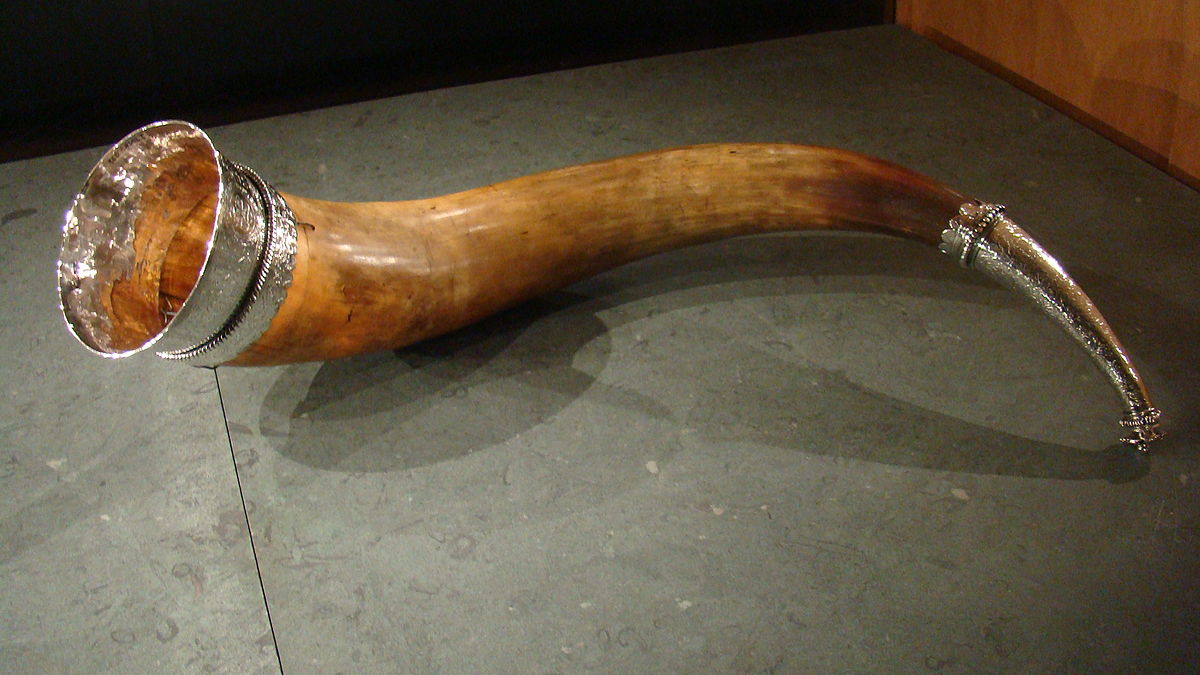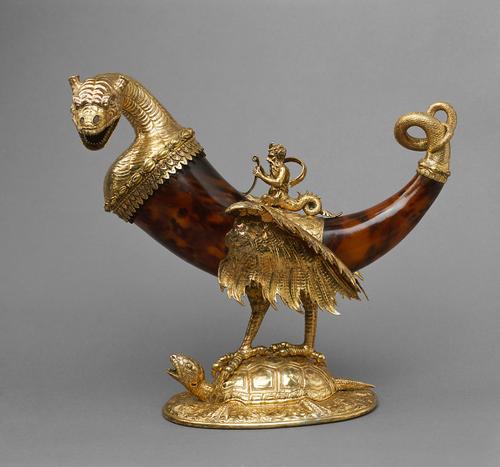
A matter of horns….
Many objects come to mind when the word ‘horn’ is mentioned (some unmentionable). In music, the French horn, and of course the English horn (because they like to be different), the hornpipe and Alpenhorn, and not quite so musical, the car horn. Places are ‘horn’ – many small towns in Switzerland, Germany and Austria are called ‘Horn’ and of course there is the Matterhorn, Horn Island (Queensland), Cape Horn and more. The telephone is sometimes known as the ‘horn’ and there are longhorns, greenhorns and cream horns, but the reason for this article here is drinking horns.
Bayeux Tapestry
The drinking horn captured my interest when I was taking a group to see the Bayeux tapestry In Normandy, reportedly the longest tapestry in the world. This tapestry is a series of scenes depicting the Battle of Hastings fought in 1066 when King Harold II was defeated by William the Conqueror of Normandy France. One of the scenes shows the feasting before King Harold II embarks for Normandy. Five figures are depicted as sitting at a table in the upper story of a building, three of them holding drinking horns.
And more recently, I was talking with a Georgian wine company and the matter of horns was raised again, so I thought it timely to find out more about them.
Some research and unashamed plagiarism, came up with these results. And some great photos which makes you wonder where Aussies got the expression 'flat out like a lizard drinking' - maybe here?
.jpeg)
What is a drinking horn?
A drinking horn is the horn of a bovid used as a drinking vessel. Drinking horns are known from Classical Antiquity especially the Balkans, and remained in use for ceremonial purposes throughout the Middle Ages and the Early Modern period in some parts of Europe, notably in Germanic Europe, and in the Caucasus. Drinking horns remain an important accessory in the culture of ritual toasting in Georgia in particular, where they are known as khantsi.
Drinking vessels made from glass, wood, ceramics or metal styled in the shape of drinking horns are also known from antiquity. The ancient Greek term for a drinking horn was simply keras. To be distinguished from the drinking-horn proper is the rhyton, a drinking-vessel made in the shape of a horn with an outlet at the pointed end. You drink from the large end of a real horn! And yes, size matters!
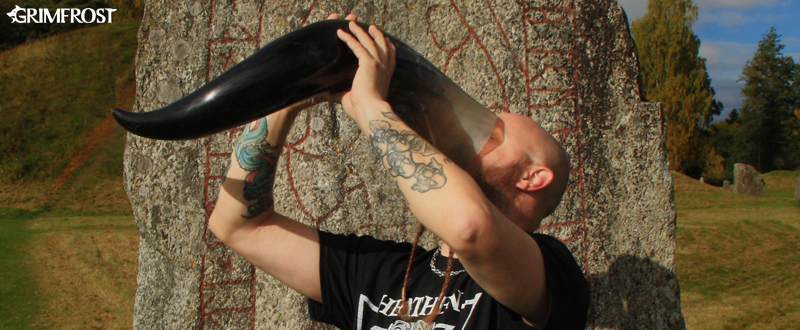
When was the first drinking horn made?
Both in the Greek and the Scythian sphere, vessels of clay or metal shaped like horns were used alongside actual horns from an early time. A vase from around 480BC shows Bacchus and a satyr each holding a drinking horn.
The oldest remains of drinking horns known from Scythian burials are dated to the 7th century BC. The Scythian drinking horns are clearly associated with the consumption of that wonderful nectar, wine!
It is more difficult to assess the role of plain animal horns as everyday drinking vessels, because these decay without a trace, while the metal fittings of the ceremonial drinking horns of the elite are preserved archaeologically.
It was customary for Scythian warriors and the elite to be buried along with their horns between the 7th and 4th century BC.
The fashion of the drinking horn apparently goes back to prehistoric times - iron age - and horns have been found indicating that the Vikings, early Celts, Julius Caesar and the Romans, the French, English, Danish, Germans and indeed all across Europe, the horn was a necessity for wine consumption.
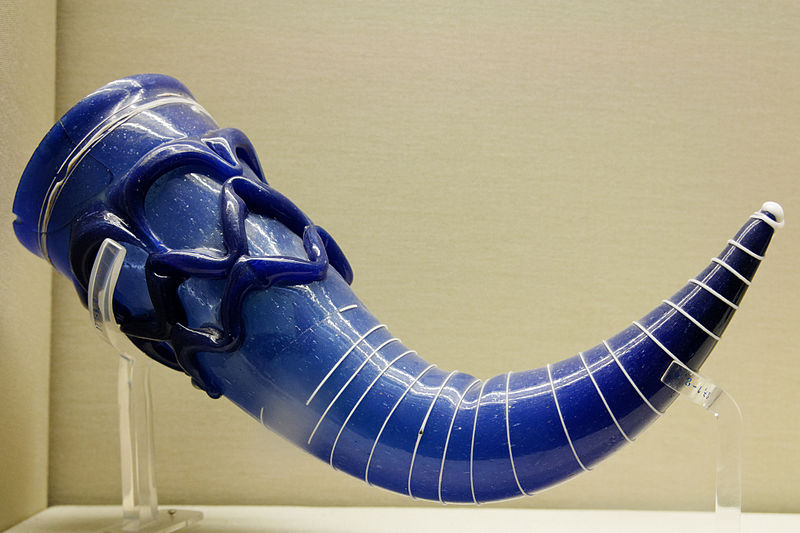
An Italian horn
Some notable examples of drinking horns of Dark Ages Europe were made of the horns of the aurochs, the wild ancestor of domestic cattle which became extinct in the 17th century. These horns were carefully dressed up and their edges lipped all round with silver. The British Museum also has a fine pair of 6th century Anglo-Saxon drinking horns, made from Aurochs horns with silver-gilt mounts.
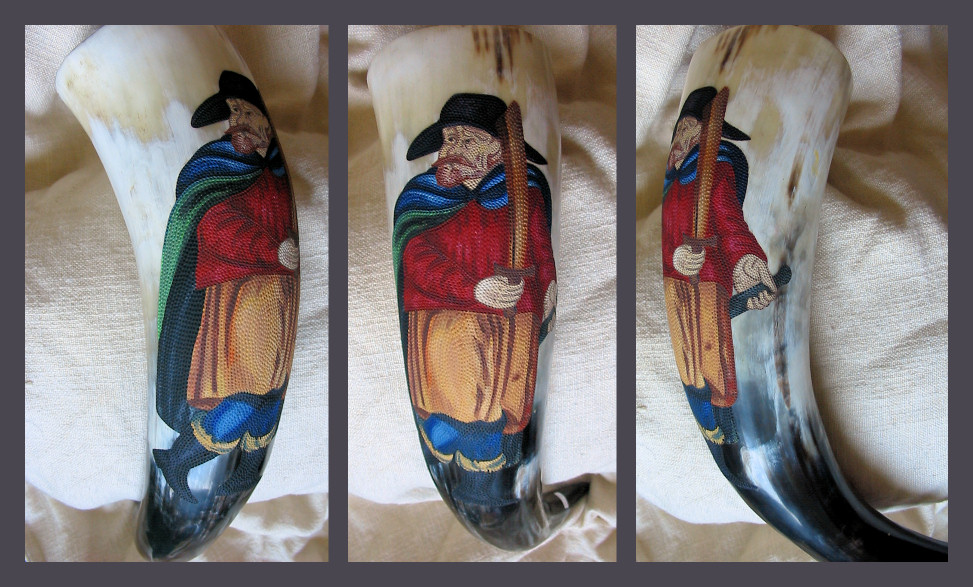
And so throughout history, men with horns would have a ‘horn-off’….. and you too can do this!
How to make your own horn
1. Capture a bull with horns (or some other bovine)
2. Remove the horns (this could be a bit tricky)
3. Clean out the stuff inside
4. Make sure the small end does not leak (disaster!)
5. Disinfect the inside of the horn
6. If the wine you pour into the horn smells and tastes like wet bull, have a look at this Youtube video
7. And just for a bit of fun, here is some horn music while you are taking on this artisan craft. Have a listen to Mozart’s 4 Horn concerto with some words written by a couple of English musician/comedians, Flanders and Swann – called ‘Ill Wind’.
Ill Wind by Flanders and Swann
And let's hope you don't 'find your horn ..... gorn!'.
Slow Tours offers a number of Wine Tours in Europe
A visit to the Bayeux tapestry mentioned in this article is included in our Small Group Tour of Normandy
